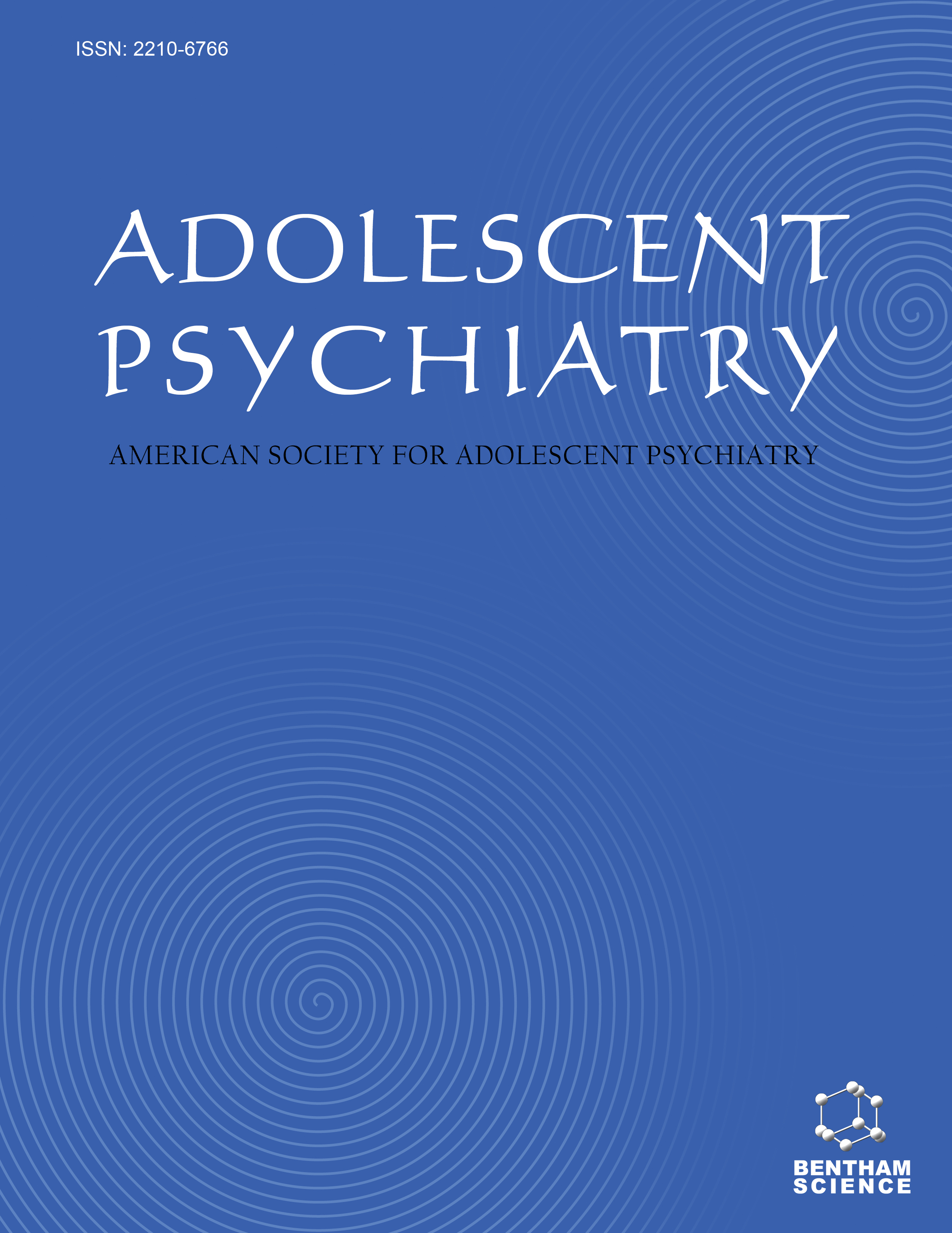- Home
- A-Z Publications
- Adolescent Psychiatry
- Previous Issues
- Volume 10, Issue 3, 2020
Adolescent Psychiatry - Volume 10, Issue 3, 2020
Volume 10, Issue 3, 2020
-
-
Accentuate the Positive: Strengths-Based Therapy for Adolescents
More LessPurpose: The field of psychiatry has conventionally employed a medical model in which mental health disorders are diagnosed and treated. However, the evidence is amassing that using a strengths-based approach that promotes wellness by engaging the patient’s assets and interests may work in synergy with the medical model to promote recovery. This harmonizes with the patient-centered care model that has been Read More
-
-
-
The Psychoanalytic-Interactional Method (PiM) for Adolescents with Borderline Personality Disorder
More LessAuthors: Annette Streeck-Fischer, Charline Logé and Simone SalzerBackground: Studies have shown the practicality of diagnosing borderline personality disorder (BPD) in children from the age of 12 years (cf. ICD-11, DSM-5). Research in the psychodynamic therapy of adolescents with BPD has been rare to date, however, there do exist some studies on the efficacy and effectiveness of psychodynamic therapy in adults with borderline personality disorder. Methods: We adapted the psychoana Read More
-
-
-
Suicide Attempts and Adolescents: The Need for Specialized Resources at Adult Trauma Centers
More LessAuthors: Stefanie Soelling, Deepika Koganti, Ivan Padilla, Michael Goodman, Priya Prakash and Randi SmithBackground: Suicide is the second leading cause of adolescent death and suicide attempts outnumber deaths 50:1 for adolescents 15 to 19 years of age. This study examines differences in outcomes between adolescents and adults treated at an adult trauma center in an effort to guide recovery and prevention strategies following an adolescent suicide attempt. Methods: Retrospective review of patients aged ≥14 years t Read More
-
-
-
Adolescent Inpatients with Depression: Comparison to Inpatients without Depression and to Peers without Psychiatric Disorders
More LessAuthors: Emma M. Savilahti, Minna Rytilä-Manninen, Henna Haravuori and Mauri MarttunenBackground: Family background, social support and psychological characteristics are known to be associated with depression in adolescence, but scientific data in complex, naturalistic settings are scarce. Objective: To investigate the characteristics of adolescent psychiatric inpatients with depressive disorders compared to peers without psychiatric disorders and to adolescent psychiatric inpatients without depression. Meth Read More
-
-
-
Prevalence of Body Dysmorphic Disorder and Predictors of Body Image Disturbance in Adolescence
More LessAuthors: James Collison and Lisa HarrisonBackground: Body dysmorphic disorder encompasses a range of cognitive and behavioural states stemming from distressing, negative evaluations of one’s appearance. Despite the seriousness of this condition, little is known about who is likely to receive a diagnosis and more importantly what the putative risk factors are. This is particularly so among adolescent samples, where the extant literature is considerably smaller. Objec Read More
-
-
-
Reactive and Proactive Aggression among Immigrant and Non-Immigrant Early Adolescents in Norway: The Relations to Emotional and Conduct Problems
More LessAuthors: Hildegunn Fandrem, Brit Oppedal and Thormod IdsoeObjective: This study explores the differences in the association between three different types of aggression (reactive aggression, power-related proactive aggression and affiliation- related proactive aggression) and emotional and conduct problems between early adolescents with immigrant and non-immigrant backgrounds in Norway. Methods: The sample comprised 1759 early adolescents in fifth to eighth grade (10- to 15- y Read More
-
-
-
Anti-NMDA Receptor Encephalitis in a Patient with a History of Autism Spectrum Disorder
More LessAuthors: Xavier Diao and Milana MorBackground: Anti-NMDA receptor (NMDAR) encephalitis is an autoimmune syndrome characterized by a well-described constellation of neuropsychiatric symptoms. Its exact pathophysiology is poorly understood, but it is thought to be mediated by autoantibodies against NMDA (N-methyl-D-aspartate)-type glutamate receptors in the central nervous system. There is ongoing literature to suggest that patients with au Read More
-
Most Read This Month
Article
content/journals/aps
Journal
10
5
false
en


